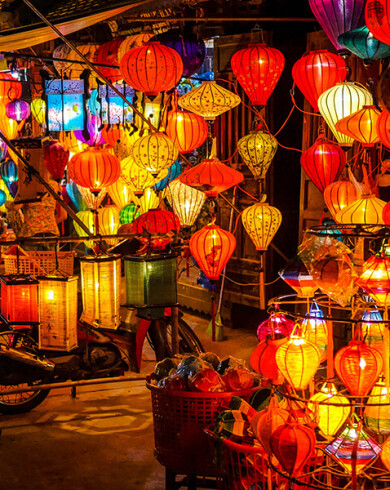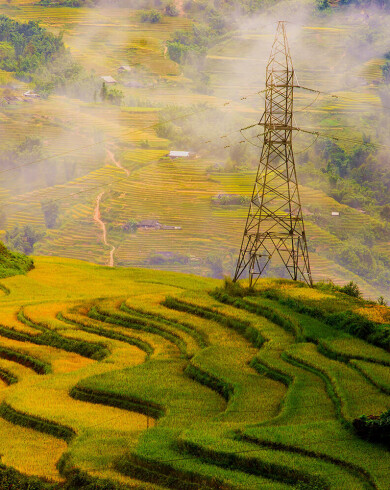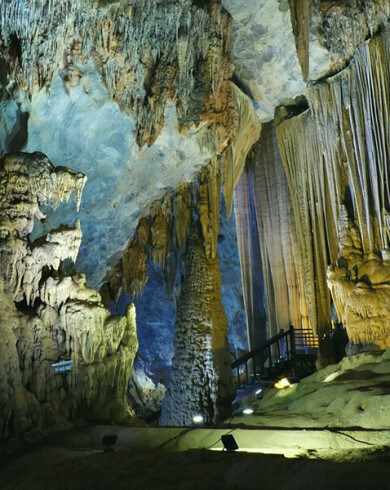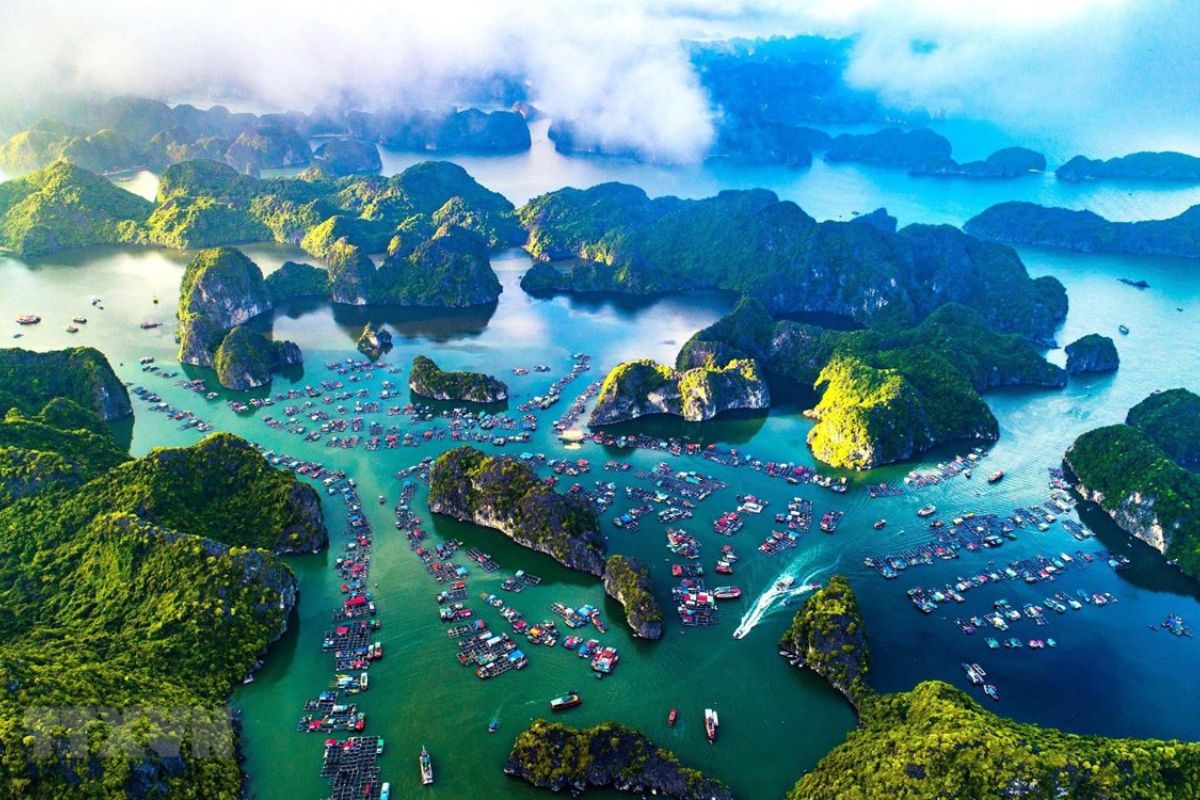TABLE OF CONTENT
- Best time to go to Vietnam
- Vietnam visa requirements
- How to get to Vietnam
- Where to go in Vietnam
- Vietnamese food
- Unique experiences in Vietnam
- Things not to do in Vietnam
- How to get around Vietnam
- Where to stay in Vietnam
- Travel costs
- Safety tips
- Cultural customs and etiquette
- Things in Vietnam You Might Not Like
- What to buy in Vietnam
- What to bring to Vietnam
- Vietnam travels themes
Vietnam, a country of breathtaking landscapes, rich history, and vibrant culture, offers travelers an unforgettable experience. Stretching over 3,000 km, this charming Southeast Asian country stretches from the pristine highlands in the north to the fertile Mekong Delta in the south. Famous for the famous karst mountains of Ha Long Bay, the terraced rice fields of Sapa, and the pristine beaches along the central coast, Vietnam’s natural beauty is renowned around the world. Vietnam is a developing country that still retains its classic culture and architecture, which reflect its history. Historical sites that reflect its complex past are well preserved and maintained, making them accessible to visitors from all over the world. This Vietnam travel guide will help you discover all there is to know about Vietnam, a country that should be visited at least once in your life!
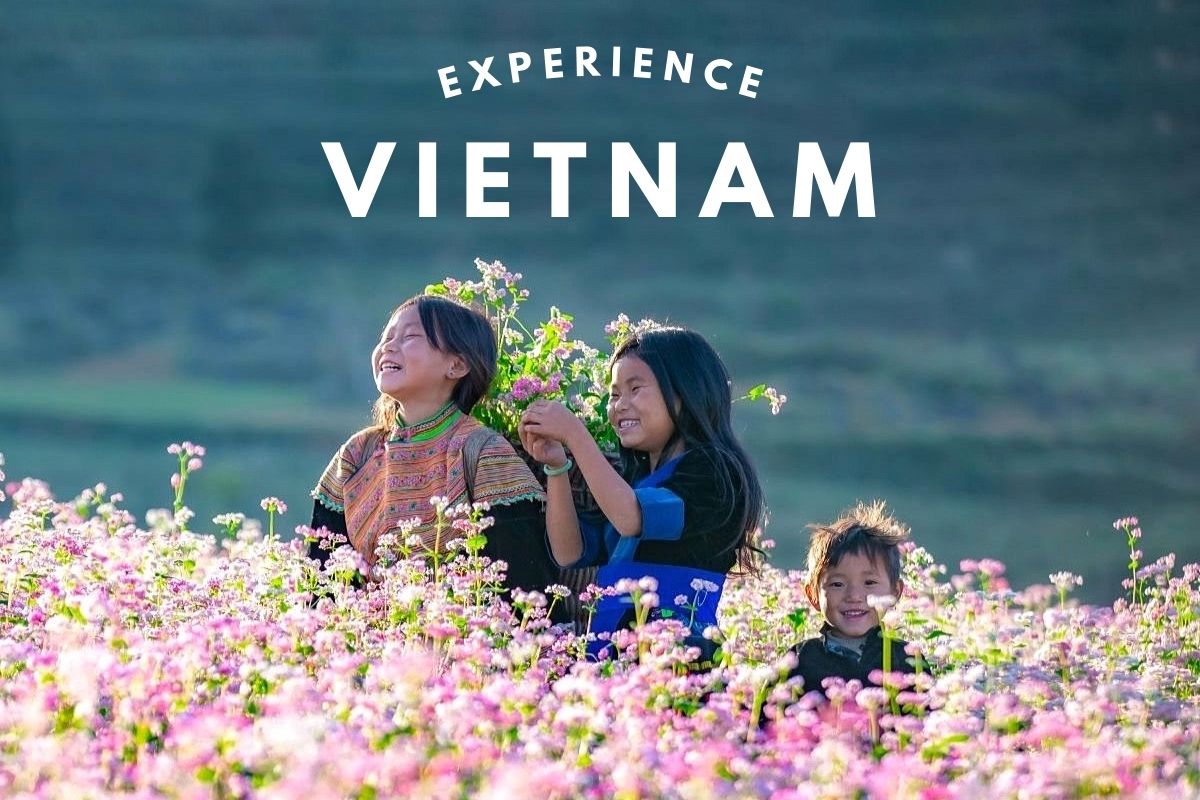
Best time to go to Vietnam
Although Vietnam has a tropical monsoon climate, the north and south can have very different weather patterns due to the country’s long, narrow shape and diverse geography. While their timing varies by region, the country generally has two distinct seasons: the rainy season and the dry season.
Northern Vietnam has cool, dry winters from November to April, with temperatures ranging from 15 to 20°C (59 to 68°F). With highs of 30 to 35°C (86 to 95°F) and increasing rainfall, the summer months of May to October are hot and muggy. Typhoons are also expected from July to September. Find out more about the best time of year to travel comfortably to the north here.
Hue, Da Nang and Hoi An are located in central Vietnam, where temperatures stay around 30°C (86°F) during the dry season, which lasts from January to August. The most pleasant weather is from February to May. The rainy season, from September to December, brings heavy rainfall and potential flooding, especially in October and November.
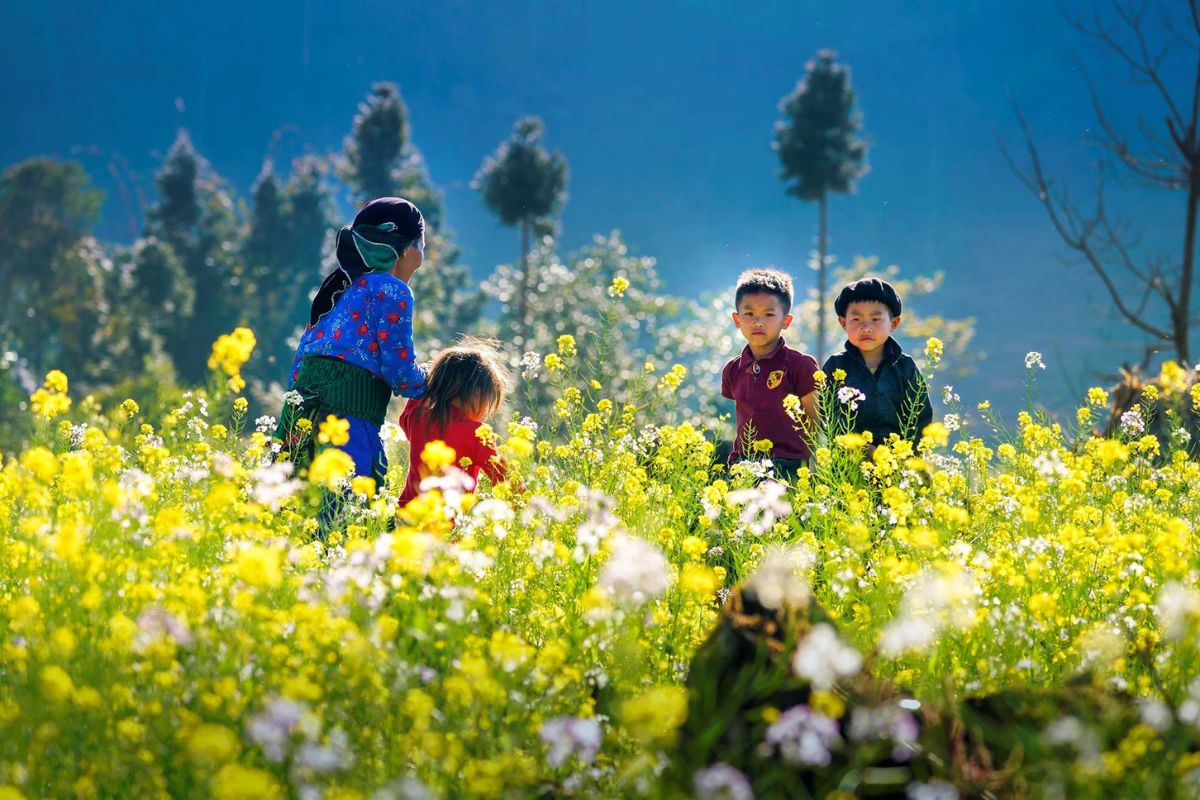
Southern Vietnam has a dry season from December to April, with hot and humid conditions and temperatures around 25-35°C (77-95°F). The rainy season, from May to November, is characterized by brief, intense afternoon downpours, but temperatures remain high. The best time to visit South Vietnam is from November to April, during the dry season.
When planning your trip, consider the Tet Holiday (Vietnamese New Year), which usually falls in late January or early February. While it’s a fascinating time to experience Vietnamese culture, many businesses close, and accommodation prices increase. This Vietnam travel guide recommends the shoulder seasons of April-May and September-October for a good balance of pleasant weather and fewer crowds in many parts of the country.
>> Read more:
The Best Time to See Vietnam – Vietnam Travel Guide 2024
Vietnam visa requirements
Most visitors to Vietnam require a visa, but the requirements vary depending on your nationality, length of stay, and purpose of visit. Travelers from most ASEAN nations can enter visa-free for stays up to 30 days. Some European countries also enjoy visa-free entry for up to 15 days.
>> Read more:
Vietnam Visa Requirements for Australian Citizens
Vietnam visa requirements for Canadian citizens
Vietnam visa requirements for Filipino citizens
Vietnam Visa Requirements For Indian Citizens
For many travelers, the e-visa is the most convenient option. Available to citizens of over 80 countries, the e-visa allows for stays up to 30 days. To obtain an e-visa, apply through the official government website at least three working days before your arrival. You’ll need to upload a digital photo and passport information, pay a fee of around $25, and receive your visa approval letter electronically.
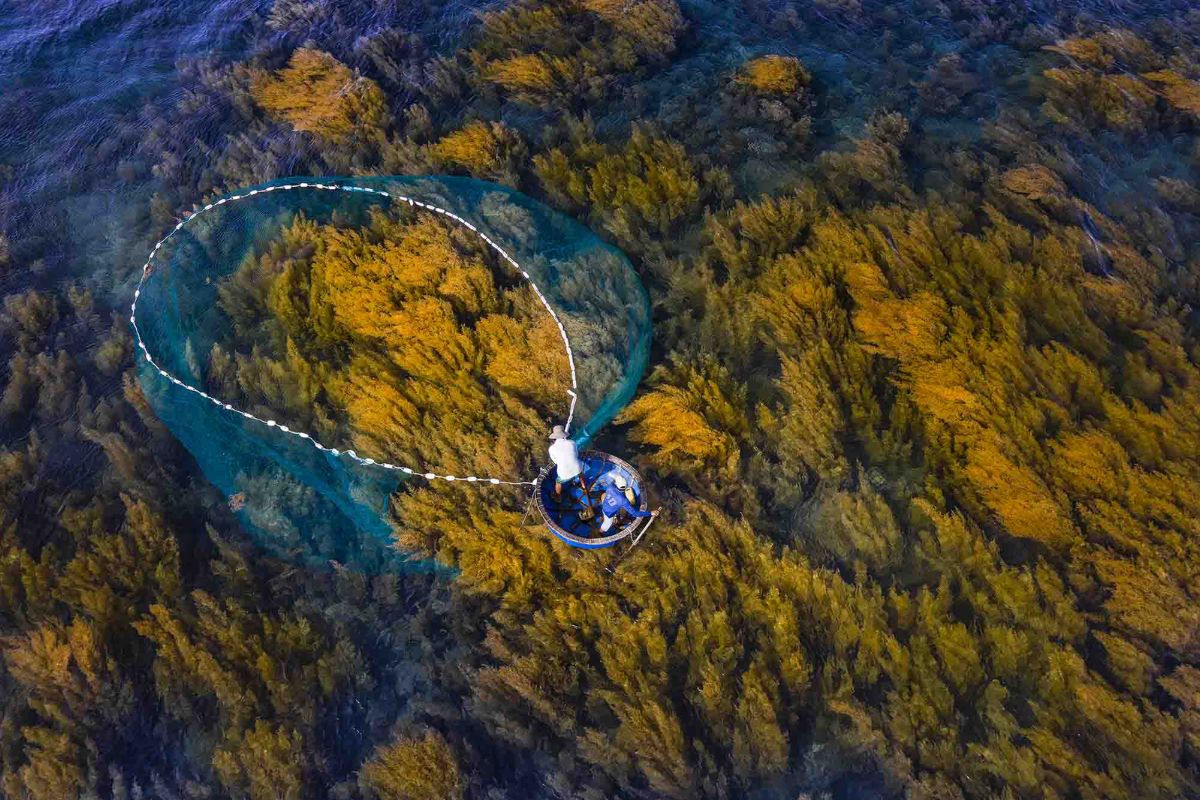
Apply for an e-visa at least three working days before your arrival on the government’s official website. You will receive an e-visa approval letter after paying a fee of around $25 and uploading a digital photo and your passport details.
A pre-approval letter from a Vietnamese agency must be obtained before traveling if you choose to use a Visa on Arrival. Present this letter at the visa counter when you arrive in Vietnam, along with two passport-sized photos and a stamping fee (around $25 for a single entry). While flexible, this approach is only available for air travel and may require longer waiting times at the airport.
How to get to Vietnam
With three major international gateways serving various regions of Vietnam, air travel continues to be the most popular and practical option for the majority of travelers. Tan Son Nhat International Airport in Ho Chi Minh City (Southern Vietnam), Noi Bai International Airport in Hanoi (Northern Vietnam) and Da Nang International Airport (Central Vietnam) are the main airports serving international travelers. Major Asian hubs as well as flights from Europe, Australia and North America land at these airports.
Several airlines now offer direct flights from cities like London, Paris, Frankfurt, Sydney, and San Francisco to Hanoi or Ho Chi Minh City. For the most up-to-date information on direct flights and to compare options, check out Skyscanner.
Overland entry is another option, particularly for travelers exploring Southeast Asia more broadly. The most frequently used land border crossings are with Cambodia, Lao, and China.
Although less frequent, sea access is becoming more popular. Ports in Ha Long Bay, Da Nang and Ho Chi Minh City are regularly visited by cruise ships. Some visitors also arrive via the Mekong River from Cambodia to combine their trip to Vietnam with a picturesque river cruise. We recommend checking visa requirements in this Vietnam travel guide carefully if entering by sea.
>> Read more: 12 Essential Things to Know Before Going to Vietnam
Where to go in Vietnam
Most visited city
Hanoi
In the north, Hanoi stands as a testament to Vietnam’s complex history. The Old Quarter, a tangle of winding streets dating back to the 15th century, is home to handicraft shops and traditional markets. The Temple of Literature and other ancient temples stand in stark contrast to the city’s colonial architecture, best exemplified by the famous Opera House. Visitors can experience local culture by sampling street food at local markets or enjoying a quiet, car-horn-free Hanoi in the early morning by Hoan Kiem Lake.

Ho Chi Minh City
The modern energy of Ho Chi Minh City contrasts with the traditional atmosphere of Hanoi. Formerly known as Saigon, this southern city features towering skyscrapers set against colonial-era architecture. The Cu Chi Tunnels shed light on human resilience during wartime, while the War Remnants Museum offers a somber glimpse into Vietnam’s recent past. For a taste of local life, wander around the bustling Ben Thanh Market or sip coffee at a sidewalk cafe while watching the city’s endless parade of motorbikes.
Da Nang
Nearby Hoi An, Da Nang has rapidly emerged as a modern beach destination. Its long stretches of pristine beaches, including the famous My Khe Beach, attract sun-seekers from around the world. The city is perhaps best known for its iconic Golden Bridge, held aloft by giant stone hands at Ba Na Hills. Da Nang is also the starting point for tours to the Marble Mountains, a group of five limestone and marble hills with caves and temples, as well as the ancient capital of Hue.
Sapa
In the northern highlands, Sapa presents a striking contrast to Vietnam’s coastal regions. Those who love to explore the majestic nature wish to visit this mountain town once to admire the beautiful terraced rice fields and the unique culture of each ethnic group here. In addition to interacting with ethnic minority groups such as the H’Mong and Dao, visitors can explore local markets and villages. The Fansipan cable car provides access to “the Roof of Indochina,” offering breathtaking views of the surrounding landscape.
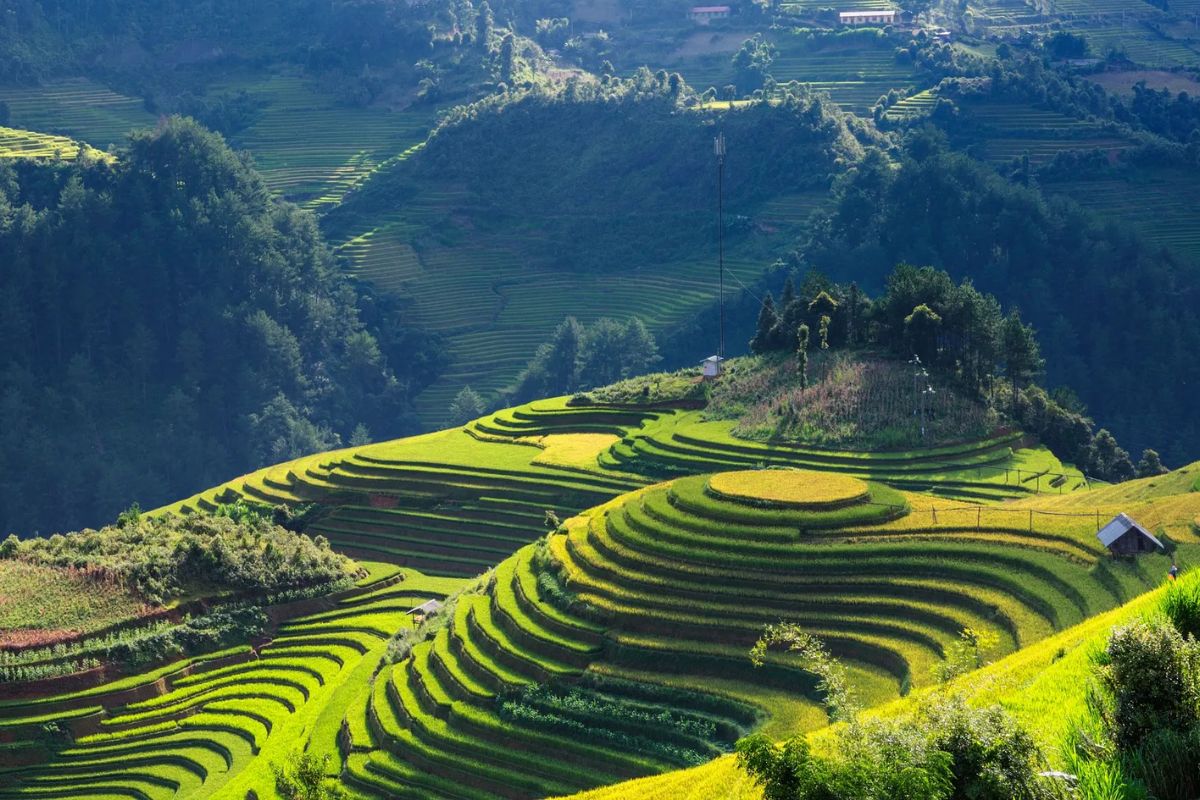
Vietnamese UNESCO World Heritage Sites
Hoi An Ancient Town
Hoi An Ancient Town, recognized by UNESCO in 1999, is a remarkably well-preserved example of a Southeast Asian trading port from the 15th to 19th centuries. This charming town captivates visitors with its blend of architectural influences from Japan, China, and France. Visitors can explore the iconic Japanese Covered Bridge, ancient merchant houses, and vibrant markets. Hoi An is particularly magical in the evenings when colorful lanterns illuminate the streets, creating a romantic atmosphere.
Halong Bay
No Vietnam travel guide would be complete without mentioning Halong Bay. This UNESCO World Heritage, characterized by thousands of limestone karsts rising from emerald waters, draws countless visitors seeking to cruise its mystical seascape. Tourists can explore the bay’s hidden caves, float past towering cliffs, and witness the daily life of floating fishing villages. Overnight cruises offer a chance to experience the bay’s changing moods from dawn to dusk.
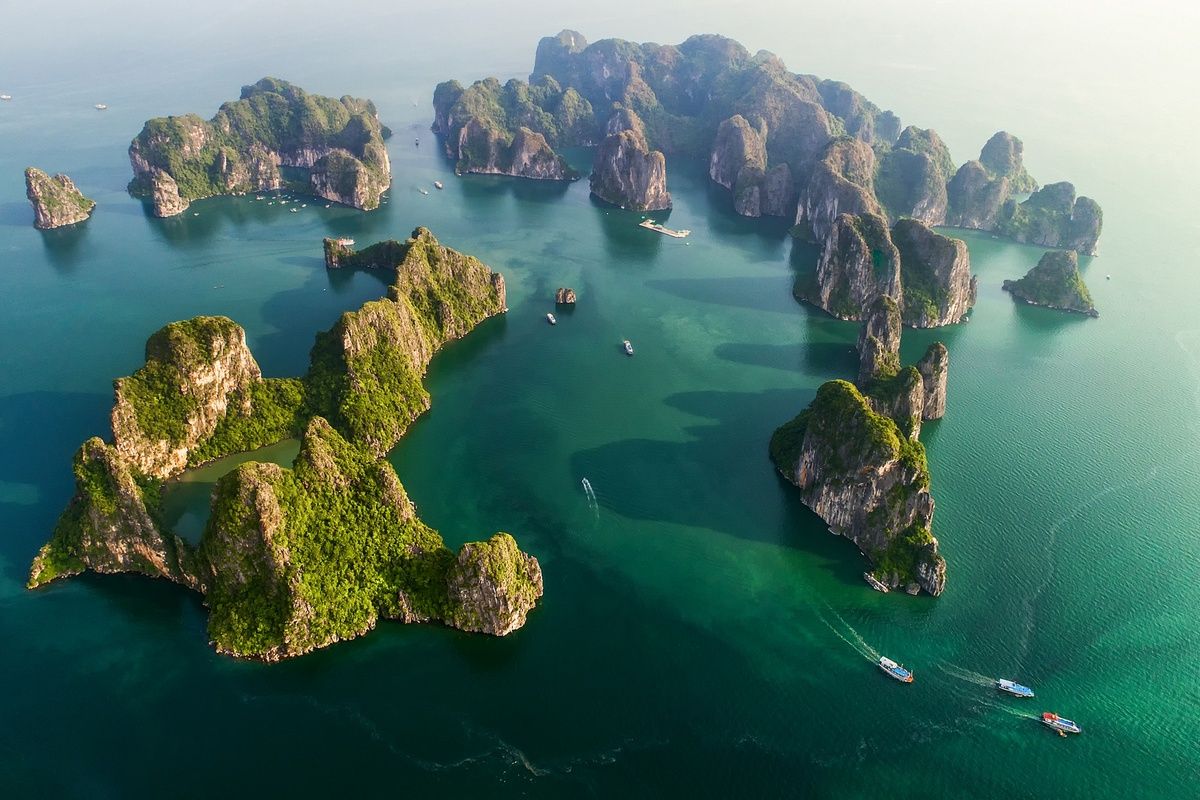
Phong Nha – Ke Bang National Park
Phong Nha-Ke Bang National Park is home to over 300 caves and grottoes, including Son Doong, the world’s largest cave ever discovered. This vast limestone region features underground rivers, stunning rock formations, and primeval forests. While access to Son Doong is limited, visitors can explore other spectacular caves like Paradise Cave and Phong Nha Cave. The park also offers opportunities for trekking, wildlife spotting, and kayaking along its pristine rivers.
The Complex of Hue Monuments
Recognized by UNESCO in 1993, the Complex of Hue Monuments encompasses the remnants of the last feudal dynasty of Vietnam. The site includes the Imperial City, royal tombs, and pagodas along the picturesque Perfume River. Visitors can explore ornate palaces, temples, and gardens that offer insight into Vietnam’s royal history.
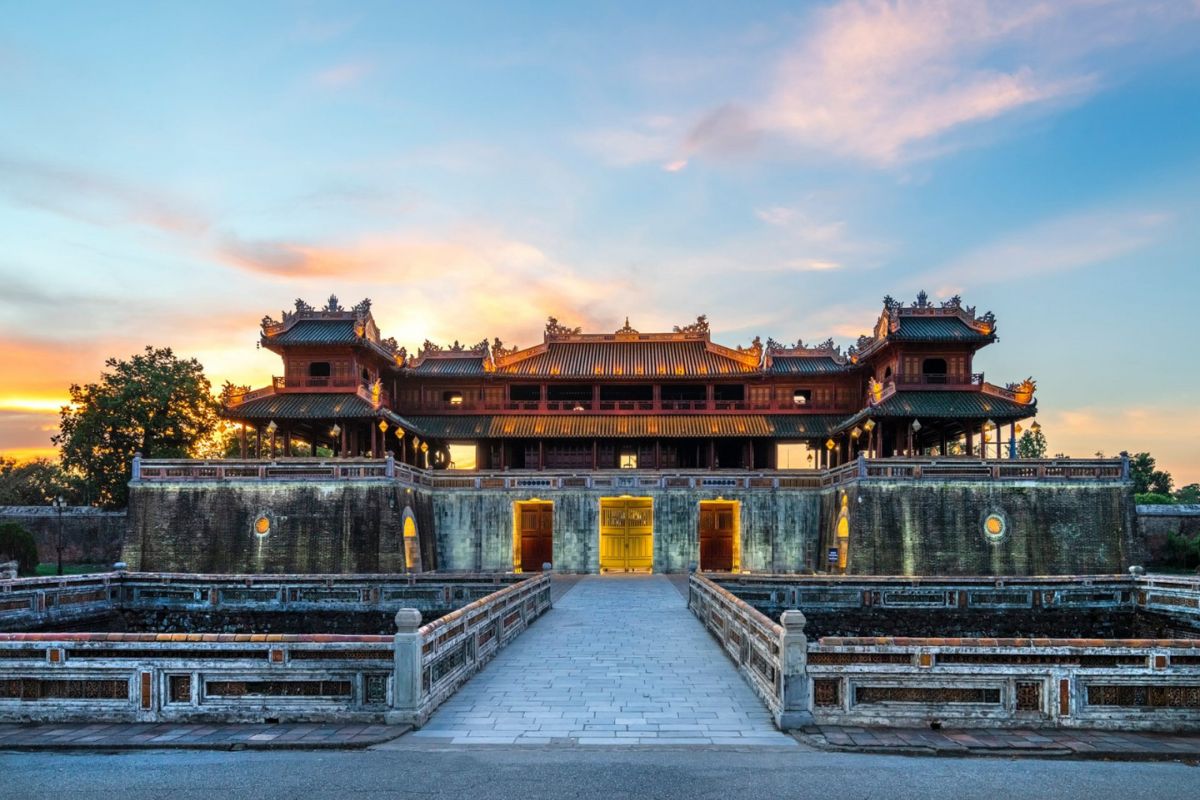
My Son Relic Site
My Son Relic Site is a cluster of abandoned Hindu temples constructed by the Champa civilization between the 4th and 14th centuries. This archaeological site showcases the sophisticated architecture and intricate sculptures of the Cham people. Despite damage during the Vietnam War, the remaining structures offer a glimpse into the religious and cultural life of this ancient kingdom. The site’s jungle setting adds to its mystical atmosphere.
Imperial Citadel of Thang Long
Located in Hanoi, the Imperial Citadel of Thang Long represents over a thousand years of Vietnamese history. This cultural complex was the political center of Vietnam for 13 consecutive centuries. The site includes ancient roads, palace foundations, wells, and various artifacts that provide insight into Vietnam’s feudal past. Visitors can explore the archaeological areas and learn about the nation’s long struggle for independence.
Trang An Landscape Complex
Trang An Landscape Complex is often called “Halong Bay on land” for its karst landscapes and riverboat rides. This site combines spectacular karst landscapes with evidence of human occupation dating back over 30,000 years. Visitors can take boat rides through a network of rivers and caves, witnessing breathtaking limestone formations and lush vegetation. The complex also includes Hoa Lu, the ancient capital of Vietnam, adding historical significance to its natural beauty.
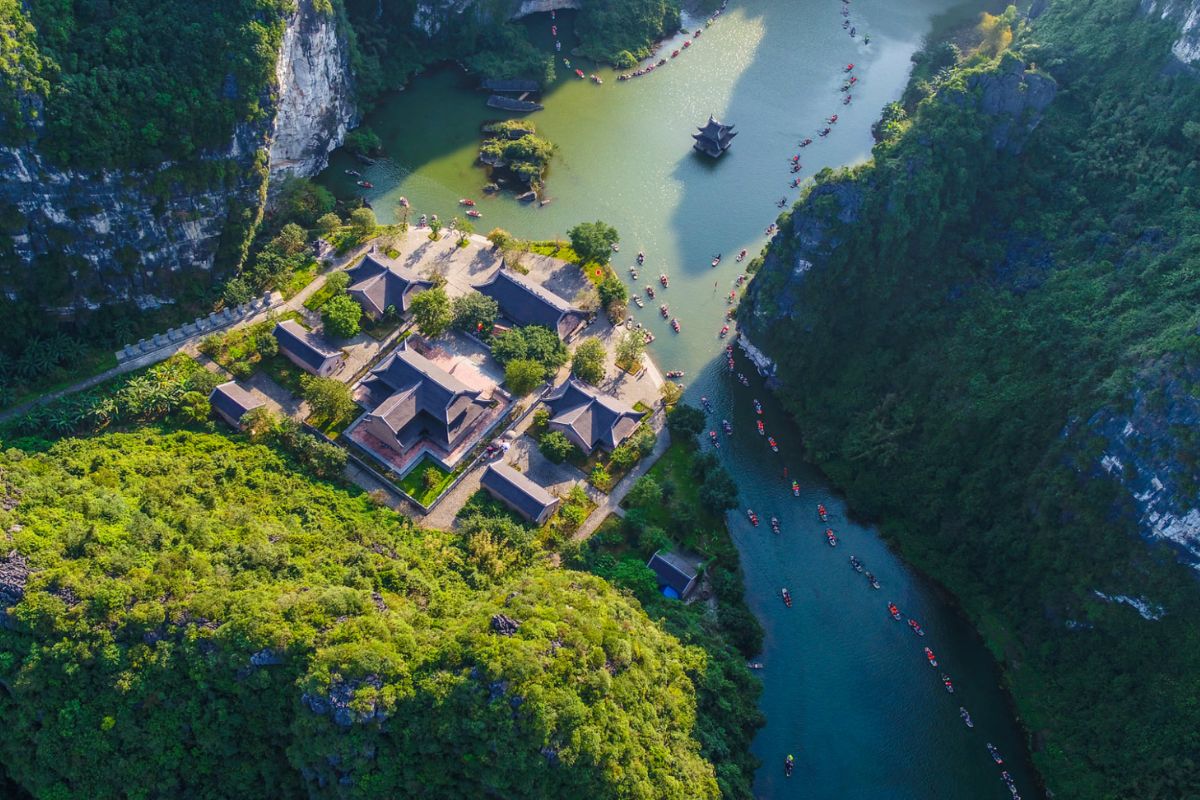
Citadel of the Ho Dynasty
The Citadel of the Ho Dynasty, recognized by UNESCO in 2011, is an exceptional example of a new style of Southeast Asian imperial city. The citadel’s architecture demonstrates the spread of Neo-Confucian concepts throughout East Asia. The site features an outer wall built of massive stone blocks, a technique rarely found in Asian architecture of the time. This well-preserved structure offers visitors a glimpse into Vietnam’s architectural and military innovations.
Off-the-beaten destinations
For those looking to explore beyond these well-known locations, this Vietnam travel guide recommends several off-the-beaten-path options.
Ha Giang
Ha Giang, Vietnam’s northernmost province, remains one of the country’s last frontiers of tourism. The region is famous for its dramatic landscapes of limestone peaks and deep valleys. The Ha Giang Loop, a multi-day motorbike circuit, takes adventurers through some of Vietnam’s most spectacular scenery, including the UNESCO-recognized Dong Van Karst Plateau Geopark. Ha Giang’s rugged beauty and relative isolation make it a favorite among travelers seeking off-the-grid adventures.

Mu Cang Chai
Famous for its stunning terraced rice fields, Mu Cang Chai offers breathtaking landscapes that change colors with the seasons. In September and October, the rice paddies turn a golden yellow, creating a mesmerizing vista. Visitors can trek through the hills, interact with ethnic minority groups like the Hmong, and experience rural life largely untouched by mass tourism.
Con Dao Island
The Con Dao Islands provide a tranquil escape with pristine beaches and opportunities for wildlife watching, including nesting sea turtles. This archipelago of 16 islands in southern Vietnam offers a stark contrast to the country’s bustling mainland. Once home to infamous prisons during French colonial rule and the Vietnam War, Con Dao now attracts visitors with its unspoiled natural beauty, clear waters, and abundant marine life.
Vietnamese food
Must-try dishes
Pho
A national treasure, this famous Vietnamese noodle soup is a must-try for any visitor. It comes with flat rice noodles and your choice of meat, usually chicken or beef, and is served in a thick, aromatic broth that has been simmered for hours with beef bones and spices. The dish is then topped with lime, bean sprouts, and fresh herbs like coriander and basil. The way you eat pho can be personalised, with ingredients like vinegar and fresh chilli, and lime. It is a breakfast favourite but can be eaten any time of day.

Banh Mi
A perfect fusion of French and Vietnamese cuisines, banh mi is a sandwich that encapsulates Vietnam’s culinary history. It starts with a crusty French baguette, split and filled with a variety of ingredients. Common fillings include pork belly, pate, pickled vegetables (usually carrots and daikon), cucumber, cilantro, and chili. The combination of flavors and textures – crunchy, soft, savory, tangy, and spicy – makes it a beloved street food staple throughout the country.
Goi Cuon
A light and healthy alternative to fried spring rolls are goi cuon, also known as fresh spring rolls. Lean pork, cooked shrimp, fresh vegetables such as lettuce and cucumber, cilantro, mint, and thin, spongy rice paper are combined to make these spring rolls. They are often served with a thick peanut sauce or sometimes a fish sauce-based dipping sauce, and they represent the bright, fresh flavors of Vietnamese cuisine.

Bun Cha
Bun cha is a dish originating from Hanoi that has become famous both inside and outside Vietnam. Rice noodles, a bowl of dipping sauce, a basket of fresh herbs, and grilled pork and sliced pork belly make up the soul of this dish. All the ingredients blend together in the sauce, which is a mixture of fish sauce, lime juice, sugar, and chili. The way to eat bun cha is very simple. You just need to dip the noodles and grilled pork into the sauce and eat it with herbs.
Fruits to try
Dragon Fruit
Dragon fruit, also known as “thanh long” in Vietnamese, is a delicious and beautiful fruit. When its bright pink outer skin splits open, white or red flesh speckled with tiny black seeds is revealed. Dragon fruit, sometimes compared to a cross between a kiwi and a pear, has a sweet, refreshing flavor. Rich in antioxidants, vitamin C, and fiber, it’s not only a tasty treat but also a healthy one.
Lychee
A favorite summer fruit in Vietnam, lychee is instantly recognizable by its thin, bumpy red skin. Peeling away this skin reveals a translucent white flesh with a floral, sweet flavor and a delicate texture. In Vietnam, lychees are often eaten fresh in addition to being used in teas, cocktails, cakes and drinks. Lychees add a pleasant flavour to foods and drinks or can be eaten on their own. They are aromatic and delicious, with a tropical fruity aroma.

Rambutan
The rambutan fruit may look intimidating because of its hairy covering, but it hides a pleasant surprise. The word “rambutan” comes from the Malay word for “hairy,” and when the red, spiky skin is removed, the flesh is translucent white and lychee-like. The fruit smells floral and tastes sweet and slightly tart.
Mangosteen
Mangosteen, also known as the “queen of fruits,” is prized for its delicate flavor. Beneath its thick purple skin lies a segmented white flesh that is delicious and aromatic. The flavor is an unusual combination of sweet and sour, reminiscent of lychees, peaches, and strawberries with a hint of citrus. Mangosteen is not only sweet, but also contains antioxidants and has been used in traditional medicine for generations.
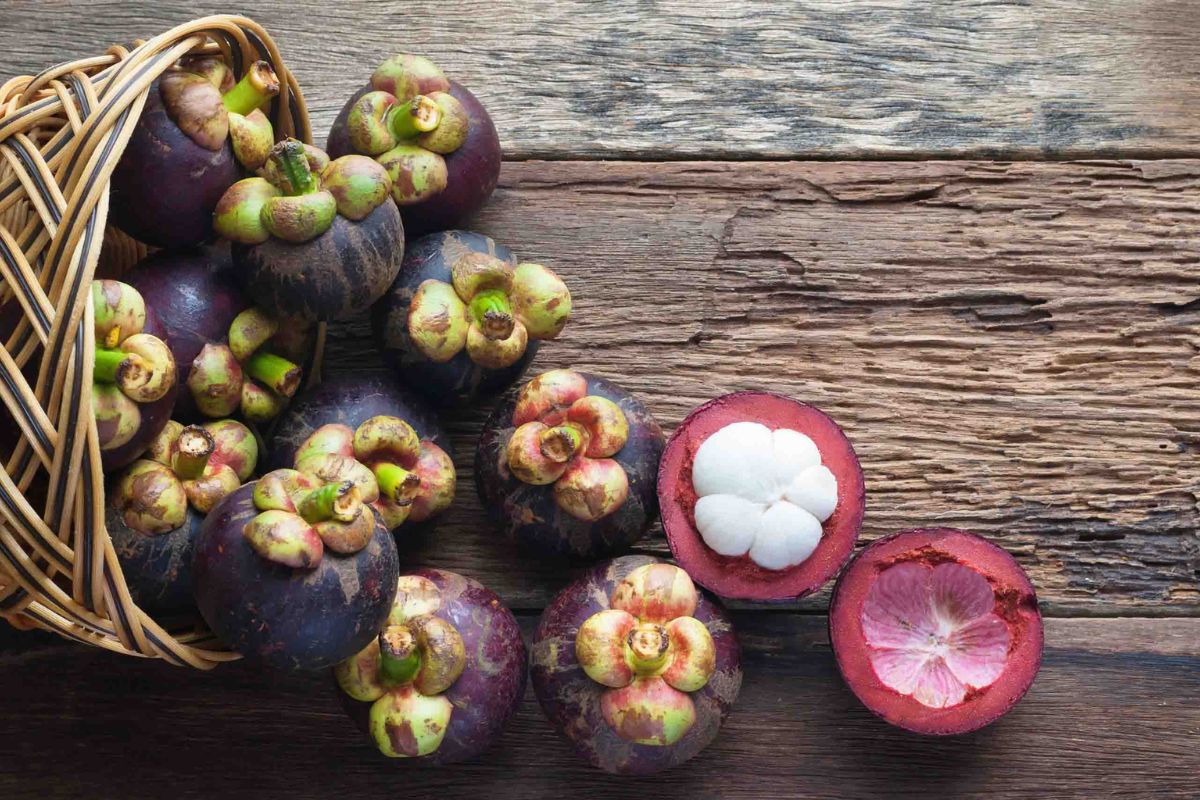
How to avoid food poisoning in Vietnam?
Food safety can be a concern, so this Vietnam travel guide recommends taking precautions to ensure a healthy and enjoyable culinary experience. Here are some key strategies to avoid food poisoning in Vietnam:
- Stick to cooked foods: Opt for hot, freshly cooked meals instead of raw or undercooked foods. Street food can be safe if you choose busy stalls where food is cooked right in front of you.
- Be cautious with water: Drink bottled water and avoid ice in drinks unless you’re sure it’s made from purified water. Be wary of raw vegetables and fruits that may have been washed in tap water.
- Practice good hygiene: Always wash your hands before eating or carry hand sanitizer. Choose restaurants and food stalls that appear clean and have a high turnover of customers.
- Follow local advice: Seek guidance from trusted sources like hotel staff or tour guides on safe eating establishments and seasonal considerations.
- Be mindful of dairy and seafood: These can spoil quickly in tropical climates. Be extra cautious, especially with seafood when far inland.
- Consider probiotics: Taking probiotic supplements before and during your trip may help support your digestive system.
>> Read more:
Top 10 Places to Eat in Vietnam
Top 20 best places to eat in Hanoi Vietnam
Top 14 Best Places to Eat in Saigon Vietnam
Unique experiences in Vietnam
Cruise over Halong Bay
Take an overnight cruise on Halong Bay to truly experience the bay’s many emotions, from misty sunrises to fiery sunsets. As you glide between thousands of limestone karsts rising from the emerald waters, you’ll explore hidden caves, kayak through tranquil lagoons and see the vibrant floating communities that inhabit the area. Many cruise lines also offer tai chi lessons on deck before sunrise, to start your day peacefully amidst this natural wonder.
Explore the Mekong Delta
The Mekong Delta, sometimes called Vietnam’s “rice bowl,” is a complex network of waterways and canals that offer visitors a glimpse into rural life in Vietnam. Take a boat trip to visit floating markets, where vendors sell fresh produce from their boats, a practice that has been practiced for decades. Visit local orchards to sample tropical fruits, then explore small towns where artisans make everything from coconut candy to rice paper. Don’t miss the opportunity to stay in a homestay, which offers an authentic look into local life and customs.
Take coconut basket ride in Hoi An
Visitors to Hoi An should not miss a coconut boat cruise. These unique excursions, often held in beautiful rural areas such as Cam Thanh Coconut Village or Bay Mau Coconut Forest, offer a scenic getaway. The trip usually lasts between 45 minutes and an hour, depending on the package or tour you choose.
The trip offers visitors a lot of fun and interactive experiences. Local experts will show you how to row and balance these unusual boats and may even perform some “basket boat ballet”, spinning them in dizzying circles.
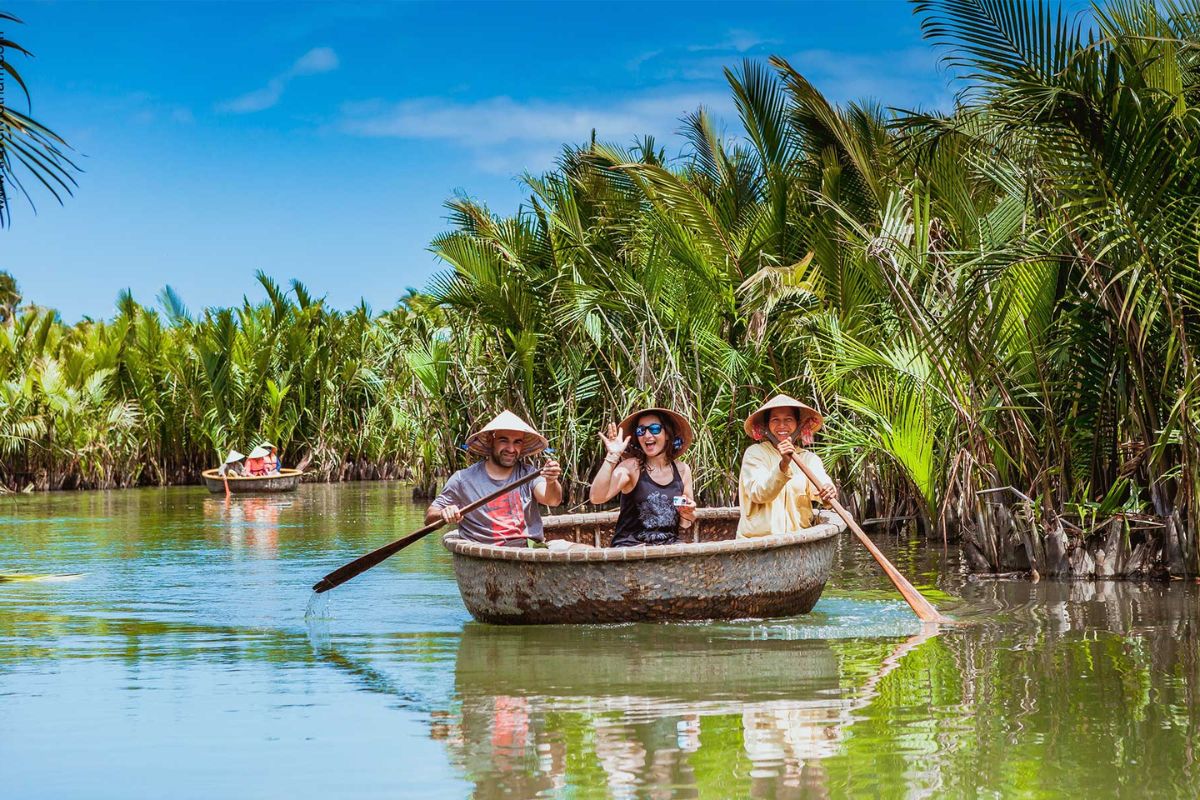
Take a motorcycle ride
Motorbikes are an integral part of Vietnamese culture as they are the most popular means of transportation. For a truly Vietnamese experience, take a guided motorbike tour through the busy streets of Hanoi or Ho Chi Minh City, or take in the breathtaking scenery of Ha Giang or Hai Van Pass. Always prioritize safety and consider sharing the back seat with an experienced driver if you are not comfortable riding a motorbike yourself.
Try street food
Enjoying street food is an important aspect of any holiday in Vietnam. Join a guided street food tour to sample the best of Vietnam, including a wide variety of local delicacies. Popular street snacks include banh mi (Vietnamese sandwich), pho (rice noodle soup), and banh xeo (crispy pancakes). Don’t be afraid to pull up a small plastic stool at a busy food stall; you’ll often find the most authentic and delicious meals. Remember to follow basic food safety guidelines, such as choosing busy stalls with high customer turnover.
Sip Vietnamese coffee on the sidewalk
Drinking Vietnamese coffee on the sidewalk is a unique experience that reflects the vibrant street culture of Vietnam. The classic iced coffee, made with milk, coffee and ice, is a must-try. The rich coffee flavor blends with the condensed milk to create a refreshing drink to get you through the day. For those who prefer a more basic coffee experience, “cà phê đen đá” is a great option, offering a strong cup of black coffee served over ice.
Sipping Vietnamese coffee while watching the world go by, whether at a small roadside cafe or on a plastic chair along busy streets, is a great way to immerse yourself in the local culture.
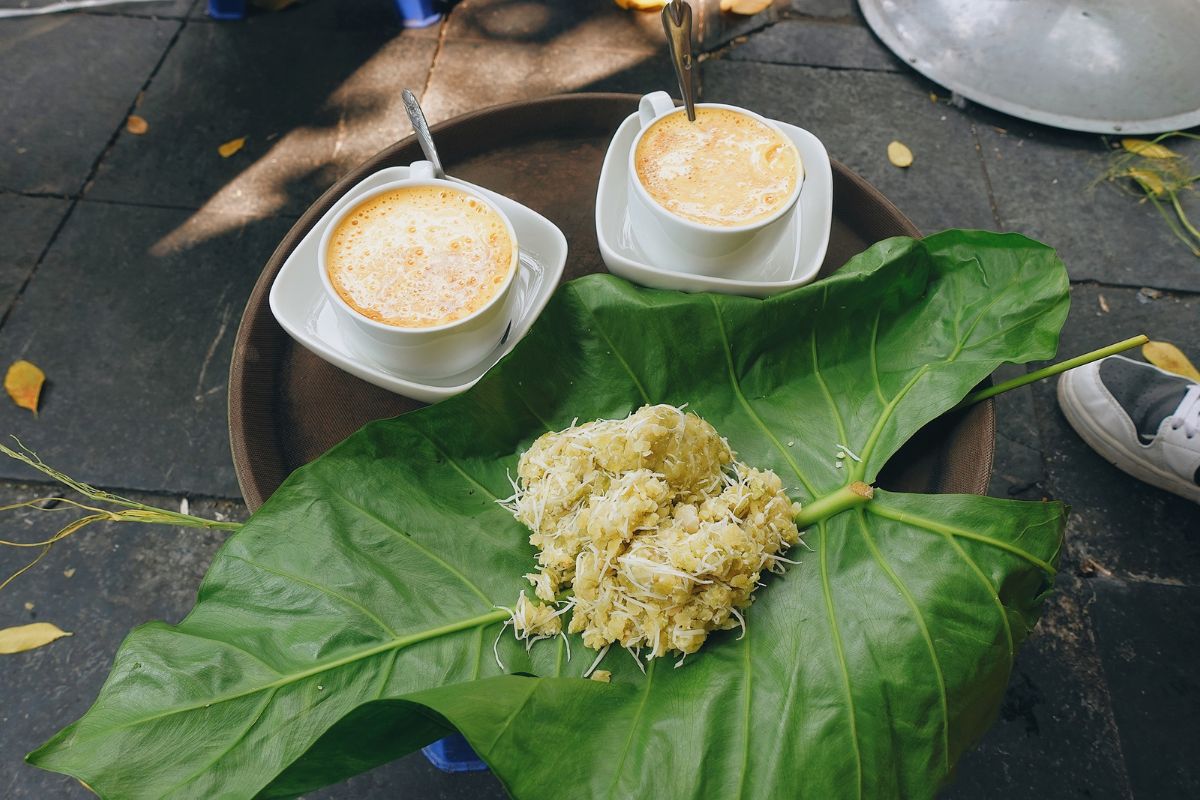
Things not to do in Vietnam
Disrespect local customs and traditions
Avoid pointing with your feet or touching someone’s head, as these are considered disrespectful. Don’t publicly display affection excessively, as it’s frowned upon—respect dress codes when visiting religious sites, covering shoulders and knees.
Ignore traffic rules
Traffic in Vietnam is quite complicated, especially when you want to cross the street. Obey traffic signs, if there are no signs, drive slowly and steadily, allowing motorbikes and cars to pass you. Only rent a motorbike if you are comfortable with the somewhat chaotic traffic conditions during rush hour.
Criticize the government or discuss sensitive political topics
Vietnam has strict rules about dissent. Avoid criticizing the government publicly or discussing controversial issues such as the Vietnam War. When discussing politics, be mindful of your audience and location.
Drink tap water
Stick to bottled water for drinking and brushing teeth. Avoid ice in drinks unless you’re sure it’s made from purified water. This helps prevent waterborne illnesses that can ruin your trip.
Engage in illegal activities
Don’t participate in drug use or prostitution, both of which are illegal and carry severe penalties. Be cautious of scams, particularly when exchanging money or booking tours through unofficial channels.
Ignore local etiquette
Shoes should not be worn inside residences or certain places of worship. When giving or receiving objects from elders or respected people, use both hands. To respect local culture, learn basic phrases such as “thank you” in Vietnamese.
How to get around Vietnam
Public transportation
Public transportation in major cities like Hanoi and Ho Chi Minh City is both affordable and efficient. The extensive bus networks cover most parts of the city, making it easy to get around. Buses are frequent and fares typically range from VND 7,000 to VND 12,000 (approximately $0.27 to $0.47 USD). When using buses, it’s helpful to keep small denominations of Vietnamese dong handy, as drivers might not have change for larger bills.
Train
Train travel in Vietnam is a fun and leisurely way to explore the country. The train network is extensive, connecting major cities and rural areas. The Thong Nhat train, which travels from Hanoi in the north to Ho Chi Minh City in the south, takes around 30-40 hours depending on the train. There are four classes of seats: hard seat, soft seat, hard sleeper and soft sleeper cabins. Soft sleeper cabins are the most comfortable for longer journeys. Tickets can be purchased online, at the stations or through travel agencies and it is advisable to book in advance, especially for sleeper cabins.
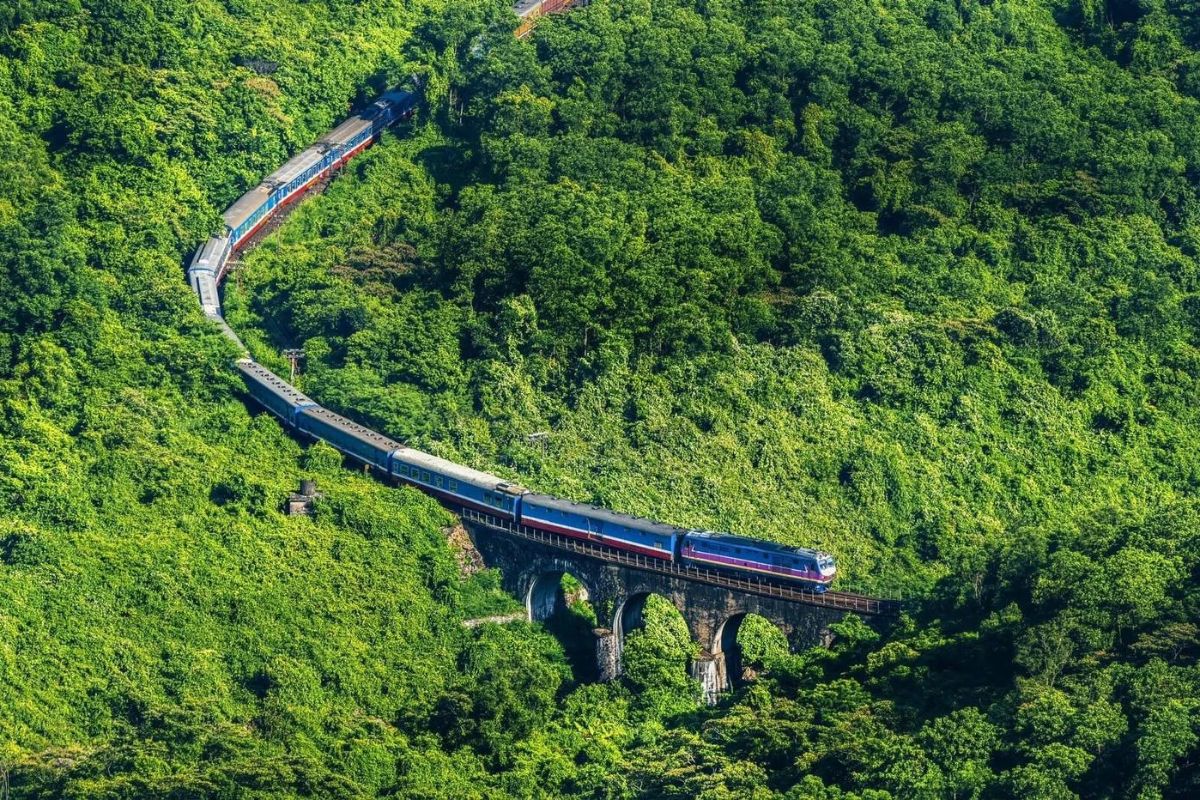
Bus
Intercity buses are a popular and cost-effective way to travel. Sleeper buses, which have reclining seats, are good for overnight trips between cities. Popular routes include Hanoi to Sa Pa, Hanoi to Hue, and Ho Chi Minh City to Nha Trang. For safety and reliability, use accredited bus companies such as Sinh Tourist or Phuong Trang. Fares vary depending on distance and bus operator, but typically range from 100,000 to 500,000 VND (US$4 to US$20).
Flying
Flying is the fastest way to cover large distances in Vietnam. Domestic flights connect major cities to tourist destinations. Vietnam Airlines, VietJet Air, and Bamboo Airways are the main domestic airlines. Popular routes are Hanoi to Ho Chi Minh City, Da Nang to Hanoi, and Ho Chi Minh City to Phu Quoc. Booking your flights in advance can help you get the best prices as low-cost airlines often offer promotional fares.
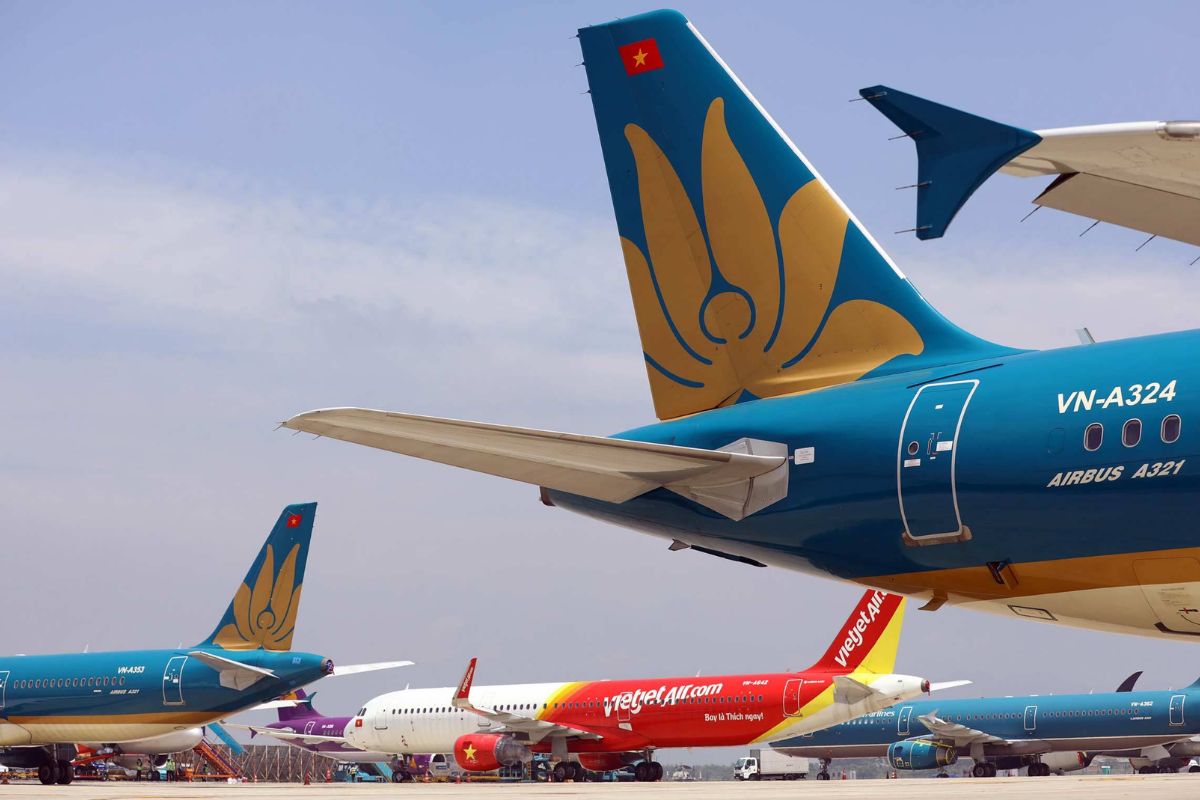
Private car
Renting a private car with a driver offers flexibility and comfort, especially for families or groups. Many travel agencies and hotels offer car rental services with drivers, allowing you to travel at your own pace and visit less accessible places. Prices vary based on distance and duration but expect to pay around $50 to $100 USD per day. This option provides a convenient way to explore the country without the hassle of navigating unfamiliar roads.
Motorbikes
Motorbikes are the most popular means of transport in Vietnam. You can rent one if you are experienced, but beware of the chaotic traffic. Renting a motorbike allows you to visit places according to your own schedule. Remember to ask for the price before starting your trip and bargain if you find the price too expensive. Ride-hailing apps such as Grab, Xanh SM are popular for both motorbikes and cars, providing an easy way to get around the city.
Where to stay in Vietnam
In this Vietnam travel guide, we provide an overview of the various lodging options available across the country, catering to different budgets and preferences.
Hotels
Vietnam has diverse hotel options, from budget to lavish five-star resorts. In major cities like Hanoi, Ho Chi Minh City and Da Nang, you’ll find both international chains and boutique hotels. Many hotels in Vietnam offer excellent value for money, with features like free Wi-Fi, breakfast buffets and swimming pools standard even in mid-range options.
In popular tourist destinations like Da Nang and Nha Trang, beachfront resorts offer stunning views and direct access to the sand. These often come with spa facilities, multiple restaurants, and organized activities, making them ideal for those seeking a relaxing vacation.
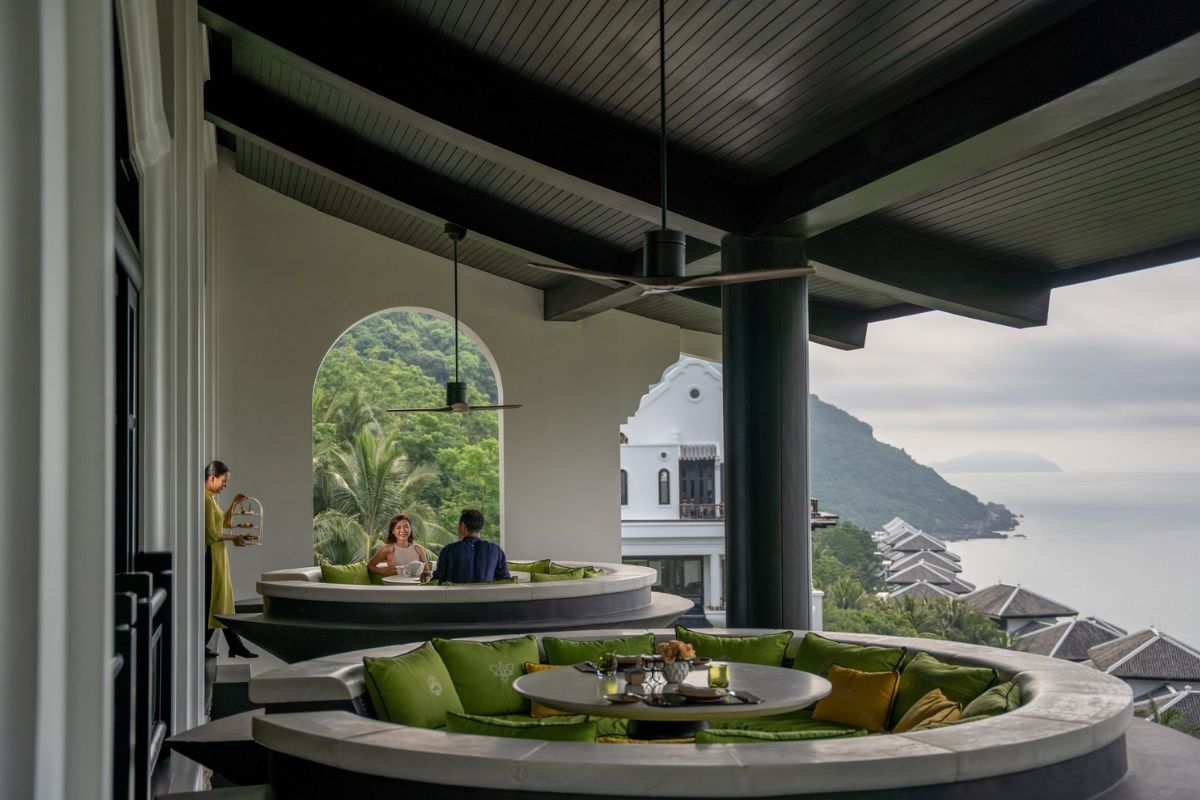
Hostels
For budget travelers and backpackers, Vietnam has a thriving hostel scene, particularly in cities and tourist hotspots. Many hostels offer both dormitory-style rooms and private rooms, often with social areas that make it easy to meet fellow travelers. Some hostels organize group activities or tours, which can be a great way to explore the local area and make new friends.
Homestays
Homestays are becoming increasingly popular in Vietnam, offering both a chance to get close to locals and an affordable option. They range from basic accommodation in rural settlements to more intimate options in urban areas. Staying with a Vietnamese family can give you a unique insight into daily life, local customs and traditional cuisine. Homestays are particularly popular in places like the Mekong Delta, Sa Pa and Mai Chau.
Guesthouses
Guesthouses, often family-run, provide a middle ground between hostels and hotels. They typically offer private rooms with basic amenities at affordable prices. Many guesthouses have a more personal touch, with owners often happy to provide local recommendations and assist with travel arrangements.
Airbnb and Vacation Rentals
In recent years, platforms like Airbnb have become popular in Vietnam, especially in larger cities and tourist areas. These can be a good option for families or groups, offering more space and the ability to self-cater.
Travel costs
Vietnam trip costs are often considered reasonable and meet the needs of many tourists. However, costs can vary significantly depending on your travel style, the places you visit, and the time of year. This Vietnam travel guide breaks down typical expenses to help you plan your budget effectively.
Accommodation costs
In Vietnam, accommodation costs vary widely. Budget travelers can find hostel dorm beds for $5-$15 per night, while basic private rooms range from $15-$30. Mid-range hotels typically cost $30-$70 per night. Luxury hotels and resorts can range from $100-$300+ per night, offering premium amenities and services.
Food and drink costs
Vietnamese food is both delicious and affordable. Street food costs around $1-3, while local restaurants charge $3-7 for a meal. Western-style or tourist-oriented restaurants are more expensive at $10-20 for a meal. Local beers are cheap at $1-2, with cocktails in bars costing $3-8.

Transportation costs
Getting around in Vietnam is relatively inexpensive. City bus fares are usually less than $1 per ride. Taxis for short trips within cities cost $2-$5, with motorbike taxis slightly cheaper at $1-$3. For longer journeys, domestic flights range from $30-$100, while overnight buses cost $10-$20. Train travel, such as from Hanoi to Ho Chi Minh City, costs around $50-$70 for a soft sleeper berth.
Activities and Entrance Fees
Most attractions in Vietnam are reasonably priced. Museum entrance fees typically range from $2-$5. Organized day tours cost between $20-$50, depending on the activity and location. For a special experience, Halong Bay overnight cruises range from $100-$300 per person, varying based on luxury level.
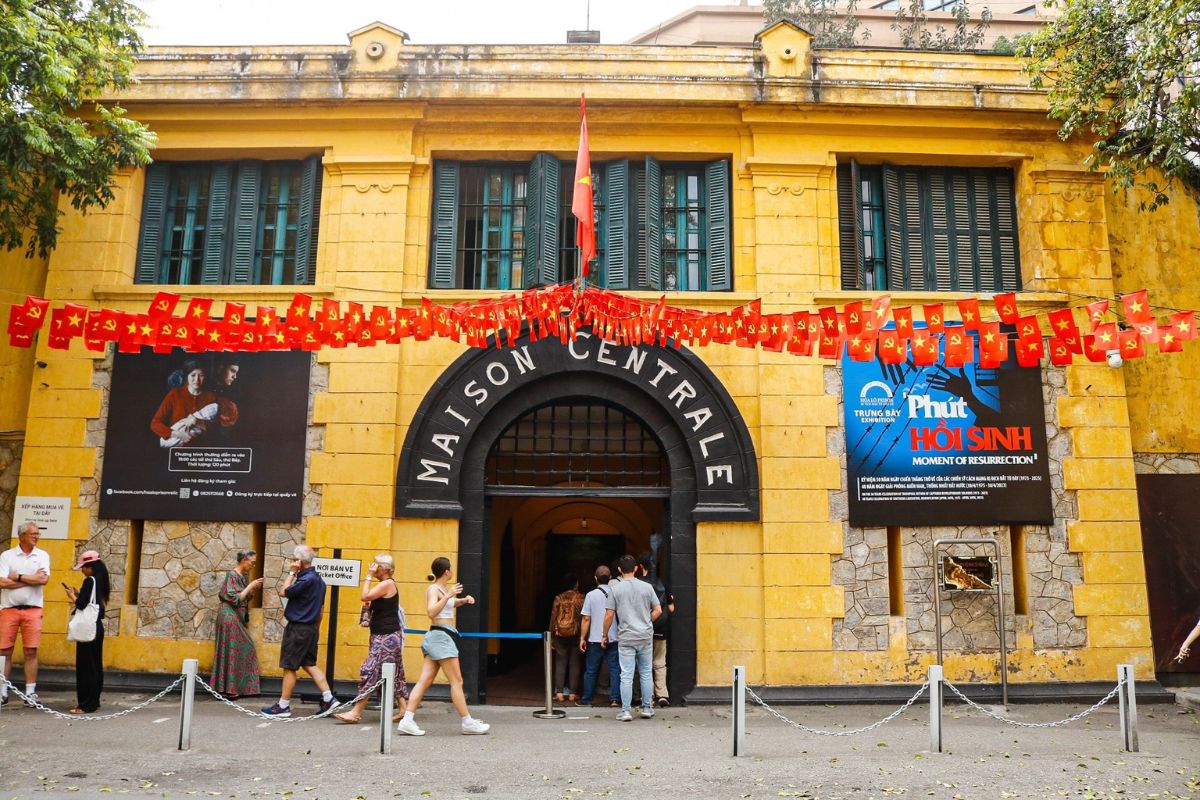
Tipping is not traditionally expected in Vietnam but is becoming more common in tourist areas. In local eateries, tipping is unnecessary, while in upscale or tourist-oriented restaurants, 5-10% is appreciated if the service charge isn’t included. For tour guides and drivers, $2-$5 per day is a kind gesture. In hotels, $1-$2 for porters or housekeeping is welcomed but not required. For taxis, rounding up the fare is common. We recommend tipping based on service quality and your satisfaction, keeping in mind it’s always optional.
>> Read more:
How much would a Vietnam trip cost?
How Much Does It Cost to Go to Vietnam for 2 Weeks?
How much money to bring to Vietnam for 1 week?
Vietnam 10-day trip cost – How to save the money?
Safety tips
When traveling in Vietnam, it’s essential to be aware of safety tips to ensure a smooth and enjoyable trip. While Vietnam is generally a safe destination for tourists, taking some precautions can help you avoid potential issues. Here are some travel tips when visiting Vietnam:
- Secure Your Belongings: Keep valuables secure in crowded areas and use a money belt or crossbody bag. Carry a copy, not the original, of important documents.
- Traffic Caution: Exercise caution when crossing streets, making steady movements and eye contact with drivers. Be aware of motorbikes and unpredictable traffic.
- Water and Food Safety: Drink bottled water and avoid ice in drinks. Eat at busy food stalls and avoid raw or undercooked foods from street vendors.
- Transportation: Use reputable taxis (like Vinasun or Mai Linh) with meters, or opt for ride-hailing apps like Grab. Wear a helmet if renting a motorbike.
- Health Precautions: Carry a basic medical kit, stay on marked trails during hikes, and ensure comprehensive travel insurance covering medical emergencies.
- Respect Local Customs: Dress modestly, especially at religious sites. Avoid public displays of affection and refrain from public displays of anger or frustration.
- Avoid Scams: Be wary of overcharging, fake tours, and incorrect change. Agree on prices beforehand and use trusted sources for bookings.
Cultural customs and etiquette
You should follow these basic instructions to respect Vietnamese culture and etiquette:
- Dress Modestly: Wear modest clothing when visiting temples, shrines or rural areas. This requires covering your legs and shoulders. It shows respect for local traditions and religious ceremonies.
- Taking off your shoes: Before entering a temple, someone’s home or even some shops and eateries, it is traditional to take off your shoes. Follow the locals or look for a pile of shoes at the entrance.
- Greeting respectfully: In Vietnamese culture, polite greetings are highly valued. You should bow slightly or nod while smiling warmly. When giving or receiving anything, use both hands.
- Language: You can show respect and establish rapport with the locals by learning a few simple Vietnamese phrases, including “xin chao” and “con on”.
- Photography: Always ask for permission before taking photos of individuals, especially in rural or ethnic minority areas. Some places, like temples, may have specific rules about photography.
Things in Vietnam You Might Not Like
When discussing things people may not like in Vietnam, it’s important to approach the topic sensitively and recognize that these are subjective experiences. Here are some aspects that some visitors might find challenging:
Traffic and noise
The constant flow of motorbikes, cars, and buses in cities can be overwhelming. The seemingly chaotic traffic patterns and frequent honking might be stressful for visitors. The noise level, especially in urban areas, can be significantly higher than what many are accustomed to, potentially disrupting sleep or relaxation.

Air pollution
In major cities like Hanoi and Ho Chi Minh City, air quality can be poor, particularly during certain seasons. This is often due to a combination of vehicle emissions, industrial activities, and construction. Visitors with respiratory issues might find this especially challenging, and some may experience discomfort even without pre-existing conditions.
Hygiene standards
Public restrooms and some street food stalls may not meet the cleanliness standards that some visitors expect. This can be particularly noticeable in markets or rural areas.
Pushy vendors
In tourist areas, some visitors may feel hassled by persistent street vendors or tour operators trying to sell their services. This can sometimes lead to uncomfortable situations or feelings of being overwhelmed, especially in popular destinations.
Lack of personal space
In crowded areas like markets or public transportation, the concept of personal space might differ from Western norms. People may stand very close while queuing or on buses, which can feel uncomfortable for those used to more physical distance in public spaces.
Challenging pedestrian experience
Sidewalks in cities can be crowded with parked motorbikes, street vendors, and outdoor seating, making walking difficult at times. Crossing the street can be an adventure in itself, requiring a level of assertiveness that some visitors find stressful.
What to buy in Vietnam
Shopping for souvenirs in Vietnam is an adventure in itself! With its rich cultural heritage and skilled artisans, Vietnam offers a treasure trove of unique and memorable items that you’ll want to bring home. This Vietnam travel guide recommends some of the best souvenirs to look out for during your travels.
Silk Products
Vietnamese silk is a must-buy for its quality and beauty. Whether it’s luxurious scarves, ties, or the elegant ao dai (traditional Vietnamese dresses), silk products are perfect gifts and souvenirs. Head to Hanoi’s Hang Gai Street, also known as Silk Street, or the markets of Hoi An for the best selection.
Ao Dai
The ao dai is Vietnam’s national dress, and owning one is a wonderful way to take a piece of Vietnamese culture with you. Tailor-made ao dai are particularly popular in Hoi An, where skilled tailors can custom-fit and design your dress in just a few days.
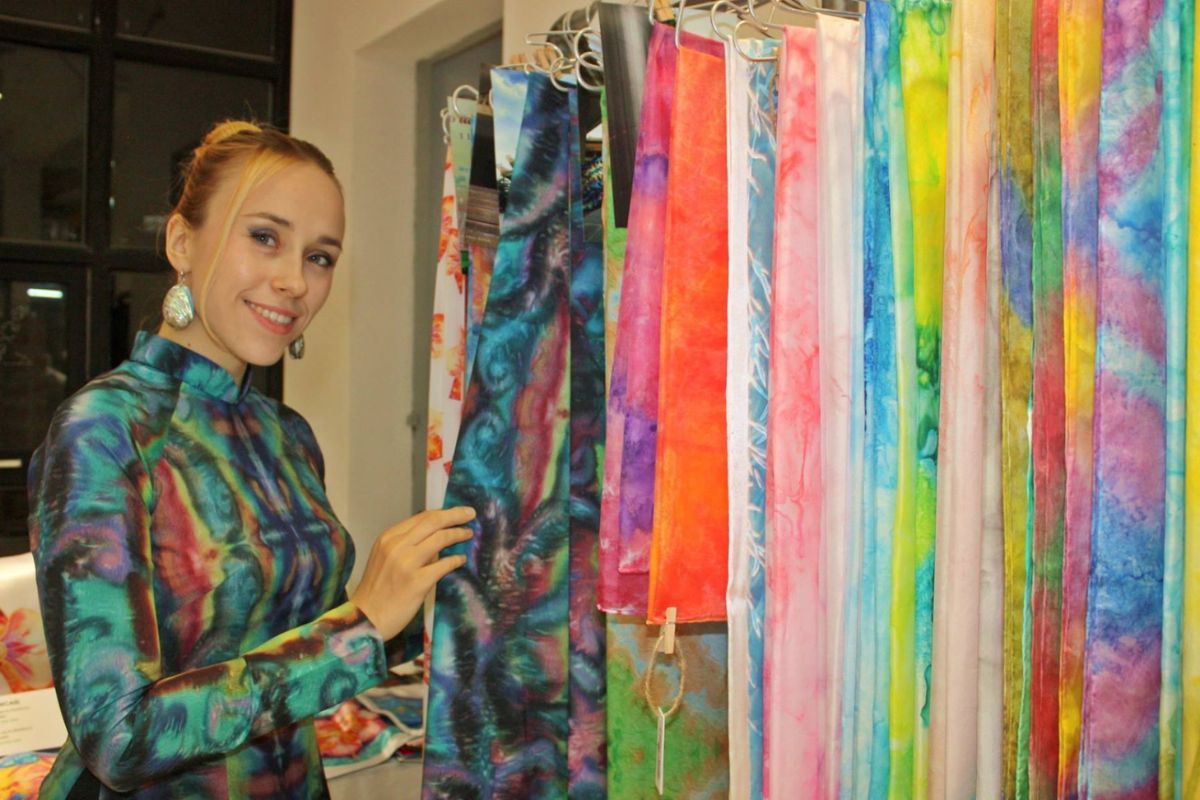
Conical Hats (Non La)
The iconic non la, or conical hat, is a symbol of Vietnam. Made from palm leaves and bamboo, these hats are both practical and stylish. They make great souvenirs and are often used as decorative items.
Coffee
Vietnam is one of the largest coffee producers globally, known for its strong, rich flavor. Vietnamese coffee beans or pre-packaged ground coffee make excellent gifts. Don’t forget to pick up a traditional Vietnamese coffee filter (phin) to complete the experience.
Handicrafts
Vietnam is famous for its handicrafts, including embroidered textiles, pottery, and bamboo products. You can find these items in local markets and craft villages. Sapa and its surrounding areas are known for beautifully embroidered textiles made by ethnic minority groups.
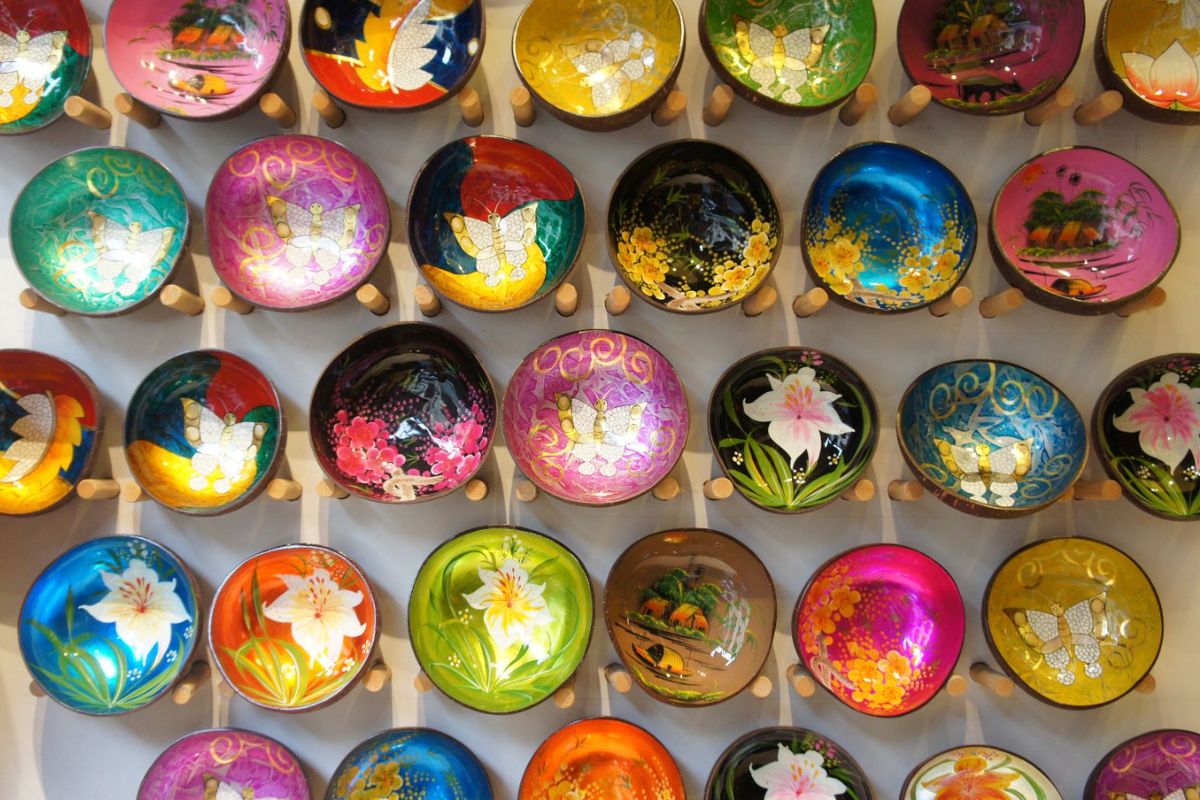
Ceramics
Vietnamese ceramics are known for their quality and beauty. Bat Trang village near Hanoi is a great place to find a wide range of ceramic products, from bowls and plates to teapots and vases.
>> Read more: Top 10+ Best Things to Buy in Ho Chi Minh City
What to bring to Vietnam
When packing for your trip to Vietnam, it’s essential to consider a few key essentials to ensure you’re prepared for the diverse climates and cultural experiences the country offers. Here’s what to pack:
Pack lightweight and breathable clothing suitable for Vietnam’s tropical climate. Cotton tops, shorts, and dresses are ideal for hot days, while long sleeves and pants provide modesty when visiting temples or rural areas. A lightweight rain jacket or poncho is handy during the rainy season (May to October).
Comfortable walking shoes or sandals are essential for exploring cities or trekking through natural landscapes. Flip-flops or sandals are perfect for beach destinations like Phu Quoc or Nha Trang.
Shield yourself from Vietnam’s intense sun with sunscreen (SPF 30+), sunglasses, and a wide-brimmed hat or cap. A small umbrella offers shade and protection from unexpected showers.
Mosquito repellent or cream is crucial, especially in rural or forested areas. Lightweight, long-sleeved shirts and pants provide added protection during evenings when mosquitoes are most active.
Carry a passport with at least six months validity beyond your stay, printed copies of travel insurance, reservations, and a local SIM card for data and calls. Use a money belt or neck pouch to securely carry cash and valuables. Keep copies of important documents separate from originals.
Vietnam travels themes
Vietnam family trips
Vietnam is an ideal destination for families seeking both educational experiences and fun-filled activities. Kids will delight in traditional water puppet shows in Hanoi, where intricate puppets dance across the water, telling tales from Vietnamese folklore. Engaging in cooking classes is another fantastic way to immerse the family in local culture, learning to prepare delicious Vietnamese dishes together.
Where to stay in Vietnam with family? Numerous resorts throughout Vietnam cater specifically to families. They offer spacious family rooms, swimming pools with dedicated children’s areas, and organized activities such as beach games and arts and crafts sessions. These resorts provide a safe and enjoyable environment where parents can relax while children have fun and make new friends.
>> Read more:
Vietnam Family Holiday Packages
Best City to Visit in Vietnam with Family
Top 11 Best Places to Visit in Vietnam with Family
Vietnam adventure trips
Vietnam offers a wide range of exciting activities that are sure to impress the daring. Trekking in Sapa offers breathtaking views of ethnic minority settlements and terraced rice fields, giving visitors a deeper insight into rural Vietnamese life. Meanwhile, caving adventures in Phong Nha-Ke Bang National Park reveal vast underground caverns and awe-inspiring limestone formations, perfect for those fascinated by natural wonders.
Motorbiking enthusiasts can tackle the exhilarating Ha Giang Loop, navigating winding mountain roads amidst breathtaking scenery. For water sports enthusiasts, Mui Ne offers prime conditions for kitesurfing along its windy coast, where adrenaline meets the beauty of Vietnam’s coastal landscapes.
Vietnam luxury retreat for couples
For couples seeking a luxurious retreat in Vietnam, indulge in high-end experiences at exclusive resorts located in idyllic destinations like Phu Quoc, Nha Trang, or Danang. These resorts offer personalized services to cater to your every need, whether it’s arranging private dining on the beach, organizing sunset cruises, or planning adventurous excursions to nearby attractions. Whether lounging by infinity pools overlooking the sea or exploring pristine beaches hand in hand, Vietnam’s luxury retreats promise a romantic and unforgettable getaway for couples seeking tranquility and opulence.
>> Read more:
Top 10 Romantic Things to Do in Ho Chi Minh City
Vietnam culture and history trips
For a glimpse into Vietnam’s vibrant cultural tapestry, immerse yourself in traditional art forms like water puppet shows, an ancient folk art depicting rural life and folklore, or participate in cooking classes where you can learn the secrets of Vietnamese cuisine from market to table.
Reflect on Vietnam’s more recent history at poignant historical sites like the War Remnants Museum in Ho Chi Minh City, which offers a powerful insight into the Vietnam War through exhibits and artifacts. Discover the Cu Chi Tunnels, an extensive underground network used by Vietnamese soldiers during the war, providing a testament to Vietnam’s resilience and wartime strategies.
>> Read more:
Ho Chi Minh City Cu Chi Tunnels
Vietnam War Tour Ho Chi Minh City
Vietnam beach getaway trips
Vietnam beach getaway trips are designed for travelers seeking a serene escape amidst Vietnam’s picturesque coastal landscapes and inviting beaches. Vietnam’s beach destinations cater to various preferences and interests. Phu Quoc, renowned for its white sandy beaches and clear turquoise waters, Nha Trang, with its stunning bay, blends luxury resorts, and Mui Ne attracts wind and kite surfers with its consistent winds.
During these beach getaways, travelers can indulge in a myriad of activities. Water sports enthusiasts can enjoy snorkeling, diving, kayaking, and paddleboarding in Phu Quoc and Nha Trang’s pristine waters. Accommodation options range from luxurious beachfront resorts to charming boutique hotels. Luxury resorts provide world-class amenities, private beach access, and personalized services, ensuring a pampering experience. Boutique hotels offer a more intimate atmosphere with personalized hospitality, perfect for romantic getaways or family vacations.
>> Read more:

